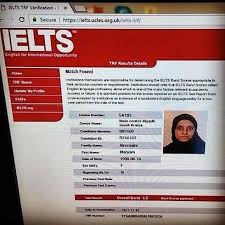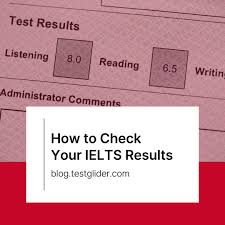Ielts Verification, The International English Language Testing System (IELTS) is one of the most widely recognized English language proficiency tests in the world. As millions of individuals take the IELTS exam every year for educational, professional, and migration purposes, ensuring the authenticity of IELTS scores has become increasingly crucial. This is where IELTS verification comes into play.
What is IELTS Verification?
IELTS verification is the process through which institutions, employers, and other relevant organizations confirm the validity of a candidate’s IELTS test results. This process is essential to prevent fraud, ensure that the scores presented by individuals are accurate, and maintain the integrity of the IELTS examination.
Why is IELTS Verification Important?
- Preventing Fraud: With the increasing number of people taking the IELTS test globally, the risk of fraudulent activities, such as falsifying scores, has also risen. IELTS verification helps combat this issue by allowing institutions to authenticate the results directly from a reliable source.
- Ensuring Fairness: Verification ensures that all candidates are judged fairly based on their actual language abilities. This is particularly important for universities, employers, and immigration authorities who rely on these scores to make informed decisions.
- Maintaining Standards: The IELTS test is a standardized exam, meaning that it follows strict guidelines to measure English language proficiency accurately. Verification helps maintain these standards by ensuring that the scores are genuine.
How Does IELTS Verification Work?
The IELTS verification process is straightforward but highly secure. Here’s how it typically works:
- TRF Number: Every candidate receives a Test Report Form (TRF) after completing the IELTS exam. The TRF contains a unique Test Report Form Number, which is essential for verification.
- Verification Portal: Institutions or organizations that wish to verify a candidate’s IELTS results can do so through the official IELTS Test Report Form Verification Service, available on the IELTS website. This service allows users to check the authenticity of the results by entering the TRF number.
- Instant Results: Once the TRF number is entered, the system will instantly display the candidate’s results. This includes the scores for each of the four sections: Listening, Reading, Writing, and Speaking.
- Security Features: To further enhance security, the IELTS verification system may include additional features like watermarks, holograms, and other anti-fraud measures on the physical Test Report Forms.
Who Can Use IELTS Verification?
- Universities and Educational Institutions: Colleges and universities around the world use IELTS scores to assess the English proficiency of applicants. Verification ensures that the scores presented are accurate and belong to the individual applying.
- Employers: Companies, especially those in English-speaking countries, often require proof of English proficiency from non-native speakers. By verifying IELTS scores, employers can make informed hiring decisions.
- Immigration Authorities: Countries like the UK, Canada, Australia, and New Zealand use IELTS scores as part of their immigration process. Verification ensures that applicants meet the language requirements.
- Professional Bodies: Many professional organizations require proof of English proficiency for certification or membership. Verification helps maintain the standards of these bodies by ensuring the authenticity of the presented scores.
Common Challenges in IELTS Verification
Despite the robust system in place, some challenges still exist:
- Data Entry Errors: Incorrectly entered TRF numbers or candidate details can lead to failed verification attempts. It’s essential to double-check all information before submitting it for verification.
- Expired Results: IELTS scores are valid for two years. Attempting to verify scores beyond this period may result in invalid results.
- Access Restrictions: Some institutions or employers may not have immediate access to the verification portal, depending on their location or other restrictions. However, IELTS is continually working to expand access to its verification services.
Conclusion
IELTS verification is a critical component in ensuring the reliability and authenticity of IELTS test results. As the test continues to be a benchmark for English language proficiency, verification processes will likely evolve to meet new challenges and maintain the integrity of the system. For institutions, employers, and other organizations, utilizing IELTS verification is an essential step in making informed decisions based on accurate and reliable data.



